 Tablets are the future. We all know that, these things are doing everything for everyone, from construction workers to my wife, tablets can do it all. More and more they are replacing other interfaces in our businesses and schools. A tablet makes more sense than a textbook, and in most cases it makes more sense for a terminal where a customer interacts with an automated experience. But is all the touching putting us at risk for sickness? Read More
Tablets are the future. We all know that, these things are doing everything for everyone, from construction workers to my wife, tablets can do it all. More and more they are replacing other interfaces in our businesses and schools. A tablet makes more sense than a textbook, and in most cases it makes more sense for a terminal where a customer interacts with an automated experience. But is all the touching putting us at risk for sickness? Read More
Author: Justin Alcon
Find what you need with Poynt
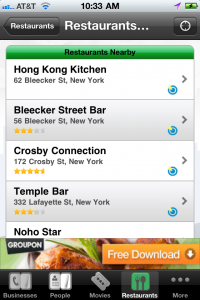 As a business person who’s often on-the-go, I often need to find something familiar in an unfamiliar place. Enter Poynt, a great “place finder” app; it’s free, and it has some great features that make it stand out in its field. First of all, the price is right. Poynt is free to get and free to use. Second of all, Poynt works well on just about all smartphone platforms, and has service in the US, UK, Canada, and many European countries. Read More
As a business person who’s often on-the-go, I often need to find something familiar in an unfamiliar place. Enter Poynt, a great “place finder” app; it’s free, and it has some great features that make it stand out in its field. First of all, the price is right. Poynt is free to get and free to use. Second of all, Poynt works well on just about all smartphone platforms, and has service in the US, UK, Canada, and many European countries. Read More
Loyalize Drives Mobile Engagement
 We already know that Google+ wants your business, but does your business need social features? You betcha. Let’s talk about Loyalize. What is it? Well, Loyalize is an audience participation company that drives engagement across connected devices. What can this mean for your business? Basically, it means you can set up a fully-branded experience around your product. It also means that you can allow your customers to interact and participate with each other even when they’re not at the same physical location. Read More
We already know that Google+ wants your business, but does your business need social features? You betcha. Let’s talk about Loyalize. What is it? Well, Loyalize is an audience participation company that drives engagement across connected devices. What can this mean for your business? Basically, it means you can set up a fully-branded experience around your product. It also means that you can allow your customers to interact and participate with each other even when they’re not at the same physical location. Read More
Priceadvice tells you the value of used items
 Previously we’ve discussed ways to use your smartphone to save money when shopping for your business. Although we all know you have to spend money to make money, no one wants to spend any more than they have to. Enter priceadvice.com, who can deliver instant values for used items.
Previously we’ve discussed ways to use your smartphone to save money when shopping for your business. Although we all know you have to spend money to make money, no one wants to spend any more than they have to. Enter priceadvice.com, who can deliver instant values for used items.
So, what’s the benefit of priceadvice.com? Here’s an example. I work at a growing company, and it’s a really cool place. As a really cool office, they provide snacks for us in the kitchen area. One of the most popular snacks is soda (my favorite is the lemon lime seltzer water). As our company grew in size, we quickly outgrew the capacity of the office fridge and needed something larger. Our COO hunted around the kitchen supply district near Chinatown and found a big glass-door cooler, used. This piece of equipment was perfect for our needs, but we had no idea what it was worth. No problem. We just pulled out the old iPhone and went on over to priceadvice.com, put in the name of the cooler, and instantly could tell if we were getting a fair deal. The only thing that could make this process easier would be if I could just take a picture of the item and know its value; although amazingly, sources say that this is a feature that priceadvice.com is currently working on.
The other thing priceadvice.com works for is selling. Sometimes in business, you end up with perfectly good items that no longer meet your needs. For instance, after our recent office move we found ourselves with some great furniture that we no longer had a use for. Again, priceadvice.com to the rescue. We knew exactly how much to ask for these items, which in turn makes it faster and easier to sell. People are more likely to buy your used things when the price is fair, ie, not too high to be unaffordable and not so low that it gives off scam-vibes. So, if you’re buying or selling used items, use your phone to check the value on priceadvice.com. It could end up saving you a bundle of time and money.
Wyse Pocket Cloud is Powerful, But Hard to Set Up
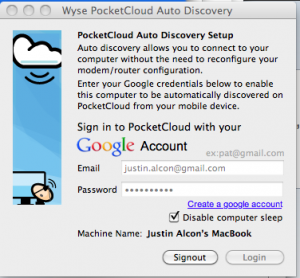 When I saw Wyse Pocket Cloud at a recent tech show, I was initially very excited about it. It’s designed to give the user complete access to a cloud, their PC, Remote Desktop Services, Terminal Server, VMware View or virtual machine from their mobile device. In short, it’s meant to give full access to any kind of computer or personal storage from your phone or tablet.
When I saw Wyse Pocket Cloud at a recent tech show, I was initially very excited about it. It’s designed to give the user complete access to a cloud, their PC, Remote Desktop Services, Terminal Server, VMware View or virtual machine from their mobile device. In short, it’s meant to give full access to any kind of computer or personal storage from your phone or tablet.
With Pocket Cloud, IT administrators can securely administer end-user machines remotely. When managing a large numbers of computers, or when you have users in many locations, this can be very handy. Pocket Cloud also allows a user to continue working on their machine remotely when traveling. PocketCloud accesses any physical or virtualized infrastructure that supports the Microsoft RDP or VNC protocols. Additionally, Pocket Cloud is VMware View 4.5 Certified and supports VMware View 4.5 connection broker in direct and tunneling modes.
PocketCloud keeps your sensitive data secure using Secure Sockets Layer (SSL) technology and they’re implementing newer technology as well. One real “get” is that it allows a backdoor way to access flash content even from an iOS device since the flash is actually running on the remote machine.
This all sounds pretty appealing, right? However, I found the product extremely cumbersome to set up. As a matter of fact, as of writing this I haven’t been able to see this product actually work. Now, don’t get me wrong; I saw it working at the product show booth. At the booth, it was everything that the demonstrator promised. However, when I installed it on my personal machine I met with frustration and failure – not a good feeling to associate with a new product!
The app and companion software were easy to download and install on my machine. Everything ran as expected and all the lights turned green on the interface. So, I fired up the app on my iPhone 4. It seemed to automatically detect my laptop where I had installed the companion software, so I tapped the icon of my computer. The connecting indicator 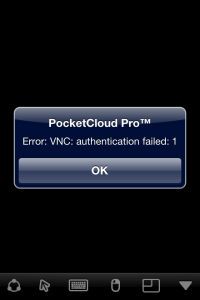 spun for a while, and then I got an error message that wasn’t helpful (pictured right). I searched their knowledge base for solutions, but was met with a hard-to-search database filled with dense technical documentation. Protip – the harder a user has to work to find easy and understandable product support, the more likely they are to just throw their hands in the air and give up. I’m sure that if I spent a few hours working on this I could get it going (I am, after all, a software engineer) but I just can’t call this “easy to set up”. This may be a great solution for enterprises with a dedicated IT staff, but if you aren’t super tech-savvy this solution may not be ready for your small business just yet.
spun for a while, and then I got an error message that wasn’t helpful (pictured right). I searched their knowledge base for solutions, but was met with a hard-to-search database filled with dense technical documentation. Protip – the harder a user has to work to find easy and understandable product support, the more likely they are to just throw their hands in the air and give up. I’m sure that if I spent a few hours working on this I could get it going (I am, after all, a software engineer) but I just can’t call this “easy to set up”. This may be a great solution for enterprises with a dedicated IT staff, but if you aren’t super tech-savvy this solution may not be ready for your small business just yet.
New Belkin Routers are Optimized for Multiple Devices
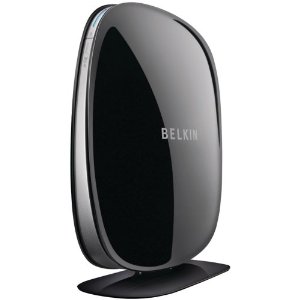 Nowadays we have all types of new gadgets to keep us connected. Those gadgets depend on a steady stream of data, often fed to them by that old standby – the router. Traditionally our wireless routers were made to support just a few devices. When the traffic became heavy, the signal became diluted and confused which caused performance problems. The only solution was to pay for more expensive bandwidth or to hardwire your devices. This was fine for a desktop, but really isn’t an option for your iPad.
Nowadays we have all types of new gadgets to keep us connected. Those gadgets depend on a steady stream of data, often fed to them by that old standby – the router. Traditionally our wireless routers were made to support just a few devices. When the traffic became heavy, the signal became diluted and confused which caused performance problems. The only solution was to pay for more expensive bandwidth or to hardwire your devices. This was fine for a desktop, but really isn’t an option for your iPad.
To help with this, Belkin has introduced some new wireless routers designed with modern technology environments in mind. Specifically, I’d like to highlight the full-featured N600 DB and N750 DB. Both of these devices are great for heavy-streaming environments; for example, a home like mine where we watch a lot of streaming video via Hulu or Netflix. It’s also ideal for an office like mine where we do a lot of Skype. Of course, both of these devices support lots of bandwidth – but, this is just the beginning of the speed upgrades. The N750 is a bit faster at the highest levels, but most networks won’t be able to use these speeds. Where these routers really shine is with their antennas. The N600 has four internal directional antennas, while the N750 has five. What does this mean? It means that for up to five moving mobile devices, the router can actually locate the devices and beam concentrated signals in their direction. This basically eliminates dead zones and greatly extends the range of the router. They’re secure, backward compatible with older networks, and have all the standard features that you have come to expect.
The internal antennae aren’t the only interesting new features in these routers. For example, they can self-diagnose network problems and sometimes even fix them automatically. They’re able to steam music and video from one device to another. They’re also optimized for gaming, can support dual band 2.4g and 5g networks, and most importantly they’re able to prioritize traffic. This means that the router can differentiate between processes that need constant rates (like a streaming video or game) and processes that can afford to be throttled, like a file download. The overall effect is that all users get a great experience. If you have a cool new phone, tablets and video games but still have a router that is a few years old, now might be the time for an upgrade. These routers are cheaper than you might expect too. The N600 can be picked up for just $69, and the N750 can be had for $99.
The Toughest Phone Cases in the World are from Tech21
Choosing a protective case for your mobile can be daunting. Seriously, there about as many models out there as there are individual phones. Contrary to popular belief, too many choices can be overwhelming and anxiety-inducing. You may wonder – what if this case isn’t as protective? What if I could have gotten the same protection for less money? Is it stylish, or am I ruining the meticulous design of this high-tech gadget? Well, fear not, for I have seen the best device-protecting cases the world has to offer. Even better, I’m willing to share this info.
For a long time I wasn’t a “case guy”, it’s not like I was using my phone on a construction site. My thought was that Apple put a lot of time and money into the design of my phone, and I wasn’t going to ruin it by bolting on some cheapo plastic afterthought. This mentality, combined with the lack of insurance options for iPhone (and the likelihood that I wouldn’t purchase insurance anyways), ended in broken phone sadness. My confidence in the durability of Apple design was as shattered as my device’s screen. My next phone wore a knock-off rubber case that I bought for 5 bucks in Chinatown. It more or less did the trick, keeping the phone in good-enough condition that I was able to sell it on Cragislist for a decent price at upgrade time, but I was never sure if this was because of the case or just dumb luck.
My next phone was the iPhone 4. In response to the criticism of the brittleness of the glass front and back, for a short while Apple gave away free cases with the purchase of iPhone 4. My phone is still wearing this Belkin clear plastic case right now, and it’s sitting beside the keyboard as I type. I believe it protects the phone just fine, but I still feel it adds too much to the size and weight, and takes away from my tactile experience, when I’m using the phone. Similar to TheBra for your car, it improves resale value but in some ways takes away from the ownership experience.
 So, obviously this is something I over-think. After quite a bit of research though, I definitely know which case I’ll choose next. No question, when I buy my next device case it will be from Tech21. Several booths at a recent conference showcased protective and/or stylish cases for mobile devices. Although there were a lot of interesting designs, only Tech21 had something new and impressive in the technology of protection. From what I saw, Tech21 has demonstrable impact protection. D3O® is their patented material that makes this happen. With some high-tech chemistry and engineering techniques, Tech21 products have high performance shock absorption and impact protection for nearly every type of mobile device. These cases should be available in the US in the very near future.
So, obviously this is something I over-think. After quite a bit of research though, I definitely know which case I’ll choose next. No question, when I buy my next device case it will be from Tech21. Several booths at a recent conference showcased protective and/or stylish cases for mobile devices. Although there were a lot of interesting designs, only Tech21 had something new and impressive in the technology of protection. From what I saw, Tech21 has demonstrable impact protection. D3O® is their patented material that makes this happen. With some high-tech chemistry and engineering techniques, Tech21 products have high performance shock absorption and impact protection for nearly every type of mobile device. These cases should be available in the US in the very near future.
The D3O material in its raw state flows freely (pictured). It’s a liquid, but on impact it locks together to absorb and disperse energy. It becomes solid and then instantly returns to its liquid state. When the material is impacted, it spreads like a net, reducing and spreading the force over a larger area, minimizing the risk of injury or equipment damage.
To test this out, I put about 2 inches of this material on the back of my hand and hit it hard with a big framing hammer. Although I knew something had happened, I certainly wasn’t hurt and would never have guessed that I had just been hit with a hammer. In drop tests these cases consistently out-performed every case on the market. In price comparison these cases are less costly than the most expensive cases like Otter Box, coming in at about 25-30 dollars depending on your device. And for bragging points, the D3O technology is also used by the US Special Forces and Ministry of Defense as well as in sports like skiing and motorcycling.
Pocket Projectors Give You A Huge Screen On The Go!
 In mobile business, smaller is almost always better. However, as mobile technology grows smaller I find that the display often suffers. Although the displays on mobile devices have increasingly impressive specs, there is always one category that they are lacking in – size. The largest tablets are only about 10 inches diagonally, and this size can really take the sizzle out of your reel during an important meeting. The solution? Toss a pocket sized projector into your travel bag!
In mobile business, smaller is almost always better. However, as mobile technology grows smaller I find that the display often suffers. Although the displays on mobile devices have increasingly impressive specs, there is always one category that they are lacking in – size. The largest tablets are only about 10 inches diagonally, and this size can really take the sizzle out of your reel during an important meeting. The solution? Toss a pocket sized projector into your travel bag!
Vivitek has released a product dubbed the Qumi that’s a perfect mobile display. This projector is bright (up to 300 lumens) and weighs less than a pound and a half, which is roughly the weight of a tablet or less than half a laptop. The Qumi uses LED technology which improves durability and brightness while reducing power consumption. It’s also 3D-ready thanks to a Texas Instruments chipset. The Qumi’s connectivity options allow it to be used with lots of devices, such as smart phones, laptops, netbooks, tablets and cameras.
Features:
- Native HD 720p resolution
- Up to 300 lumens of brightness
- Estimated 30,000 hours of operation
- USB and MicroSD slots for content and memory expansion
- 3D-Ready via DLP® Link™
- Connectivity options: Mini-HDMI, Universal I/O, AV mini-jack, mini-jack audio-out
- 1.4 pounds and available in black or white finish
Full specs can be seen on the Vivitek site.
Similarly, 3M has introduced some new pocket projectors. One I’d like to highlight is the MP180. At only 32 lumens it’s not nearly as bright, but the MP180 offers a different and impressive class of features. Unlike the Qumi, the MP180 is battery powered which allows you to give presentations for hours even when away from a power source. Secondly, this device has an easy-to-use touch screen interface. It also features on-board wifi and 4 gigs of upgradable storage. The wifi and storage means that you can use the device itself to browse the web or grab that file you forgot. More information can be found at the MP180 product page.
The bottom line for me is that both are really great pocket projectors. At a recent press event I had the opportunity to try them both and found them to be impressive. The Qumi was definitely a better quality projector with a brighter picture and more definition (so much so that I considered replacing my home television with one to save space in my small apartment.) However, the MP180 was the most portable projector. Because you don’t need to plug it in and it includes speakers and file storage on-board, you can literally do a presentation in the middle of the woods with nothing but this device and the side of your tent.
Got2B Wireless does business mobile literally
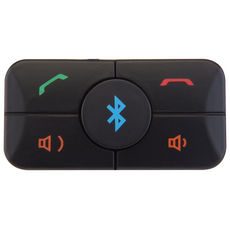 We write a lot about business on-the-go around here (it’s kinda our raison d’être), but today we’re talking about a product that takes this idea quite literally. The product : Got2B Wireless. The silly name aside, this product means serious business and I really think it has legs. Got2B Wireless allows us to do business tasks while we drive. Are you yawning? Well, what if I told you that you can conduct business using only your voice and ears, so you can keep your hands on the wheel and eyes on the road – without having a secretary or assistant on the other end of the line.
We write a lot about business on-the-go around here (it’s kinda our raison d’être), but today we’re talking about a product that takes this idea quite literally. The product : Got2B Wireless. The silly name aside, this product means serious business and I really think it has legs. Got2B Wireless allows us to do business tasks while we drive. Are you yawning? Well, what if I told you that you can conduct business using only your voice and ears, so you can keep your hands on the wheel and eyes on the road – without having a secretary or assistant on the other end of the line.
Got2B wireless connects to just about any smart phone via bluetooth, working just like a wireless headset. The button can be mounted into the dash of your car seamlessly. Car companies like Hyundai are considering making it a standard option that will compete with products like GM’s onstar. So, what can you do with this little button? First off, you can send a text message with your voice, which helps get around those important-yet-inconvenient (at times) “texting while driving” laws. You can also have your email messages read aloud as audio, so that you keep your eyes on the road and still get that important update on the way to your meeting. You can search through contacts and call them, update your facebook status, send out tweets and manage your calendar. And, you can do all this while still driving safely and legally in all 50 states.
Texting and emailing while driving is really, really unsafe. Got2B Wireless can actually make you safer, and not just through voice productivity tools. It also allows you to contact emergency services if needed. It can read turn by turn directions and look up general information for you. These are must-haves for anyone who does a lot of driving for business. The product costs about a hundred dollars, and the service is 50 bucks a year after that – which is a lot cheaper than keeping a sales assistant by the phone, or getting a ticket! So what are you waiting for? Check out Got2B Wireless today!
Even Construction Workers are Doing Mobile Teleconferencing with ooVoo
 Last week I attended the “DIGITAL EXPERIENCE! 2011” conference (yes, that’s the official name) in NYC. The event was a showcase for some exciting new mobile products that either launched recently or will launch soon. There was some great stuff there, and I’m definitely looking forward to using a lot of what I saw.
Last week I attended the “DIGITAL EXPERIENCE! 2011” conference (yes, that’s the official name) in NYC. The event was a showcase for some exciting new mobile products that either launched recently or will launch soon. There was some great stuff there, and I’m definitely looking forward to using a lot of what I saw.
One exhibitor that really caught my attention was the ooVoo booth. You may remember from my post a few weeks ago how I have trouble with Skype for teleconferencing. Well, the folks over at ooVoo claim they can fix this problem, and from what I’ve seen in my brief experience with it so far they might be right. Basically, ooVoo is a cloud-based service that allows up to 6 devices to connect in a video conference. So, you can easily meet with the guys in LA, New York, Detroit, Austin, and Chicago simultaneously – even from your mobile device.
 When I dropped by the booth, Brogan Taylor at ooVoo told me a great story that really illustrates the changing world of small-biz-gone-mobile. Brogan’s father-in-law is a contractor who manages several building sites. In the morning he meets with supervisors at several remote sites. Some of his guys are on laptops, some on tablets, some on smartphones. The owner leads the meeting from his truck cab, a couple guys have Android devices, and one guy even uses a Motorola Zoom. In just a few minutes all the guys are on the same page about supply chain issues, changing labor needs, and even impending bad weather. A few years ago I could never visualize a guy with a hardhat pulling a touchscreen computer out of a tool belt; now, it’s apparently a daily occurrence.
When I dropped by the booth, Brogan Taylor at ooVoo told me a great story that really illustrates the changing world of small-biz-gone-mobile. Brogan’s father-in-law is a contractor who manages several building sites. In the morning he meets with supervisors at several remote sites. Some of his guys are on laptops, some on tablets, some on smartphones. The owner leads the meeting from his truck cab, a couple guys have Android devices, and one guy even uses a Motorola Zoom. In just a few minutes all the guys are on the same page about supply chain issues, changing labor needs, and even impending bad weather. A few years ago I could never visualize a guy with a hardhat pulling a touchscreen computer out of a tool belt; now, it’s apparently a daily occurrence.
ooVoo follows the freemium model by offering some enterprise goodies with its paid offering. If you’d like to check it out, though, the free app is all you need to get started and it works on lots of devices. The best part? Unlike iPhone’s Facetime feature, WiFi is’t required because ooVoo does the heavy lifting on the server side; which means it can be used at regular 3g network speeds.